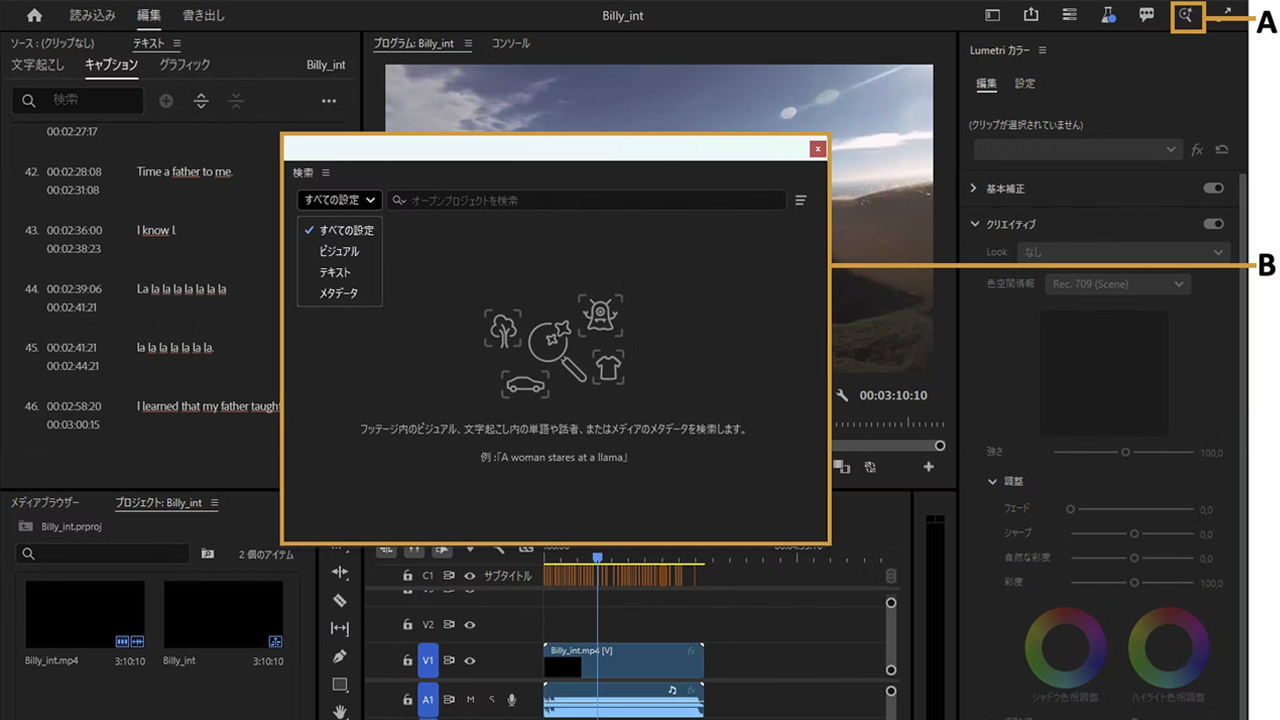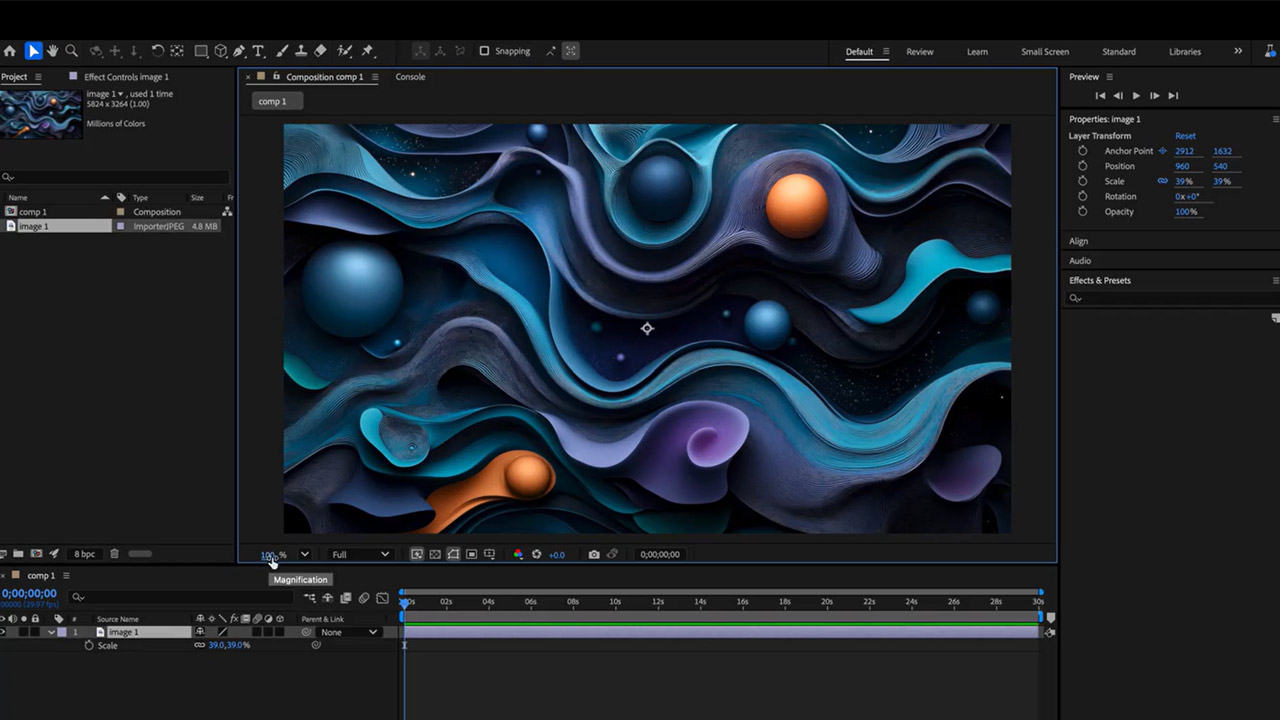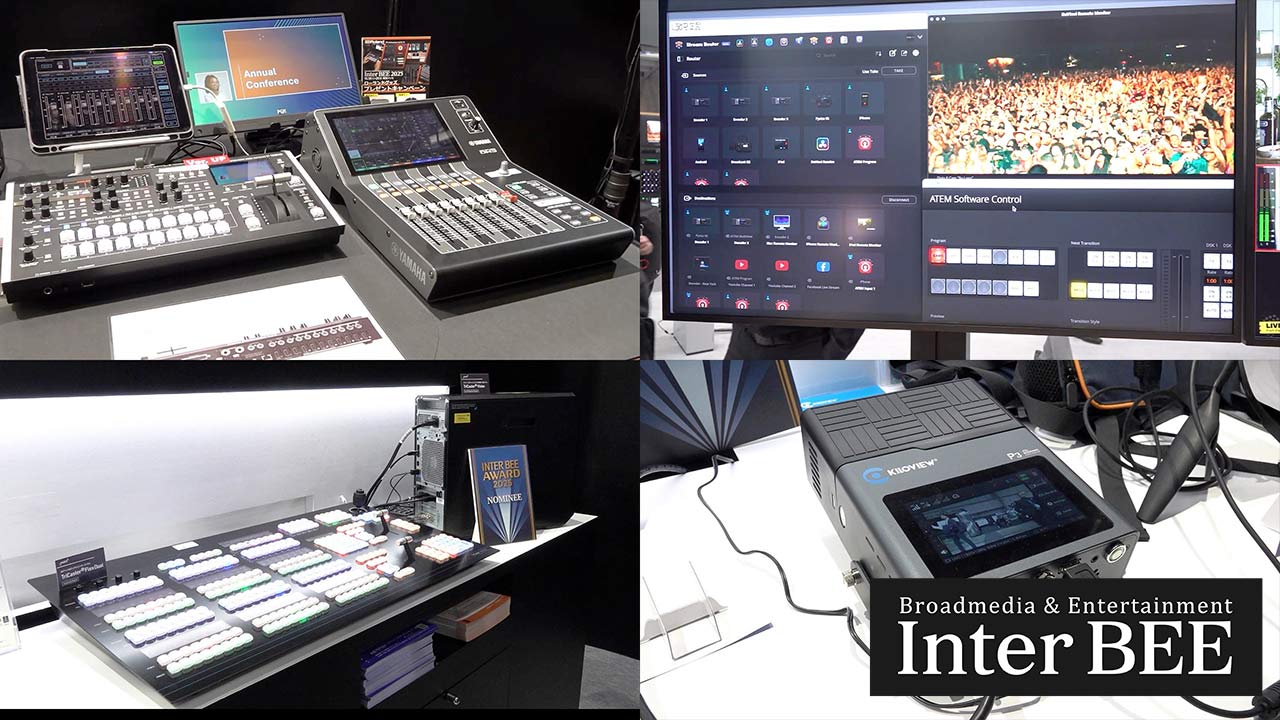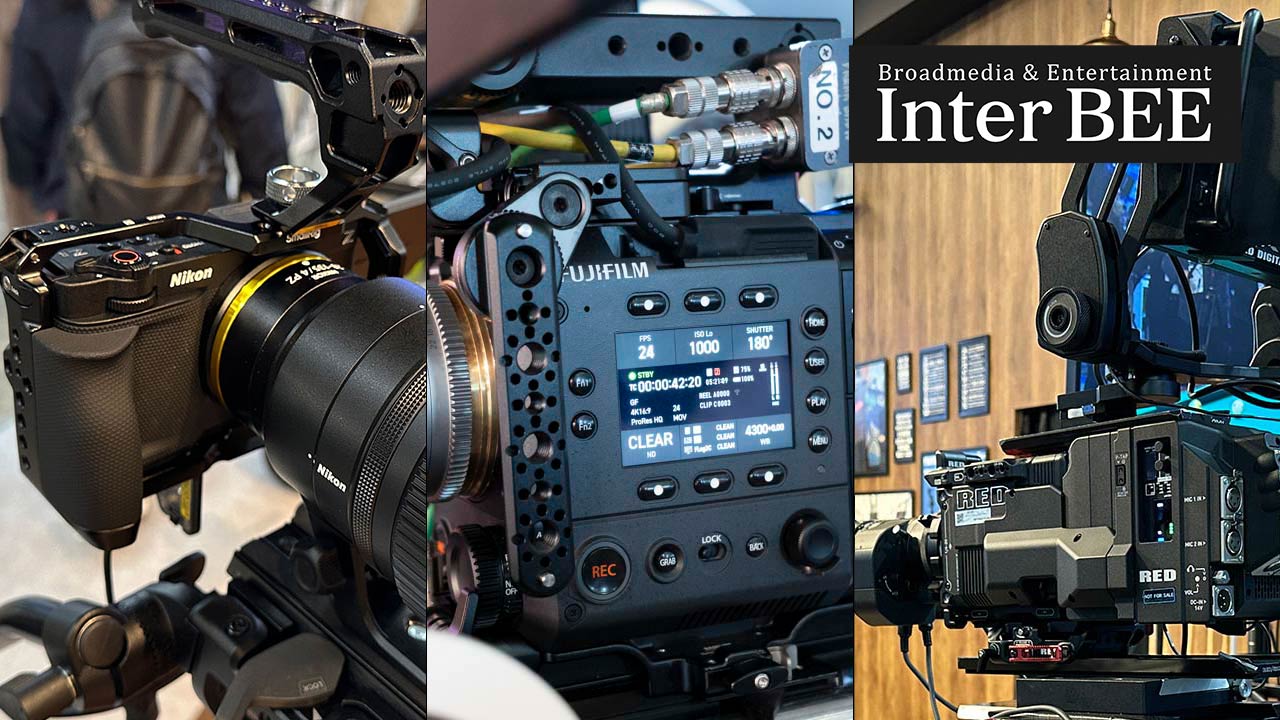NAB2025

Adobe announced version 25.2 of both Adobe Premiere Pro and After Effects at NAB 2025. These new versions include the introduction of an AI-powered video editing workflow, as well as a host of enhancements based on requests from professional video editors and motion creators.
Adobe Premiere Pro Version 25.2 now includes a 4K-compatible “Generation Extender” feature with Adobe Firefly, which makes it easy to adjust the length of videos. In addition, the new “Media Intelligence” feature makes it possible to search for the desired video material in just a few seconds. The “Translate Captions” feature automatically translates video captions into over 27 languages, enhancing multilingual support. In addition, workflow improvements have been made, including dynamic audio waveforms, the addition of color to sequence labels, and additional support for GPU-accelerated formats.
After Effects 25.2 introduces a new high-performance preview playback engine, enhanced 3D motion design tools, and adds HDR monitoring capabilities.
These new features are available starting today, and in particular, Adobe Premiere Pro’s extended production feature is offering free production credits for a limited time.
Adobe Premiere Pro Version 25.2
Adobe Firefly generation extension now supports 4K

In this update, Adobe Premiere Pro Version 25.2 now supports 4K resolution in its “Generation Extension” function, which is equipped with Adobe Firefly. The “Generation Extension” function is provided to address issues of insufficient duration that occur when shooting video. This function utilizes Adobe Firefly’s AI technology to naturally add 4K resolution frames to fill in the missing duration. This makes it possible to secure the duration needed for transitions, extend the emotional expression of characters, and supplement missing environmental sounds. The generation extension process runs in the background, minimizing interruptions to editing work. Additionally, content credential information is added to the parts generated by AI, clearly indicating where the AI is being used.
The extended generation feature will be provided free of charge for a limited time. After the free period ends, Adobe Firefly generation credits will be required, and the price will vary depending on the video format, frame rate, resolution, etc.
For more information, please refer to the Adobe official website.
Media Intelligence Search

Adobe Premiere Pro’s new “Media Intelligence” feature and “Search” panel enable quick searches through large amounts of video material.
Using AI technology, the app automatically analyzes content such as objects, locations, and camera angles in videos. Users can instantly search for relevant video material by simply entering keywords in the search field in natural language. There is no need to rely on traditional methods such as creating lists of video names, marking sequences and videos, or remembering when to shoot.
Search results are displayed in an integrated way, with visual elements, dialogue, and embedded metadata (such as shot date and camera type), allowing for efficient preview and editing by hovering over thumbnails, scrolling through the transcript, or jumping directly to the timeline from the panel.
It supports searches using specific descriptions such as “close up of hands working in the kitchen” or “aerial shot of a plate of food,” or a more general search for related information using keywords such as “cocoa.”
Media analysis runs on the user’s system, giving it the advantage of being fast and not requiring an internet connection, and like other Adobe AI tools, user content is not used to train the AI models.
Note that the visual search function will only be available in English at the time of release. Other languages are coming later.
Guesswork color management is a thing of the past

Adobe Premiere Pro introduced new features that make color management in video editing more efficient. Previously, color correction and unification of Log or RAW footage was a difficult task in video editing. Premiere Pro’s new color management function makes it easy to load high-quality materials and start editing. There is no need to directly handle Log materials.
Premiere Pro can convert Log and RAW camera files directly to SDR or HDR without the need for LUTs, most camera formats allow for automated post-import processing, and for certain formats you can tag multiple clips with color space directly from the bin.
The introduction of a wide gamut color pipeline with the industry-standard ACEScct working color space increases the dynamic range and control of color grading in Lumetri, enabling flexible color editing for multi-camera matching, skin tone adjustment, and adjusting the mood and tone of an image.
Premiere Pro color management is designed to be accessible to any video editor, allowing you to choose from six color management presets when creating a sequence, adjusting sequence settings, or working in the Lumetri panel. Advanced users can also customize advanced settings.
The default preset “Direct Rec.709” provides a similar color pipeline to previous versions of Premiere Pro, ensuring compatibility with older projects. To take advantage of the wide color gamut pipeline, there are three “Wide Color Gamut” presets to choose from.
Automatic translation of captions into 27 languages

Adobe Premiere Pro received an update focused on automatic caption translation and performance improvements.
Feedback on the transcription-based editing feature introduced in 2023 pointed out the importance of subtitles and the need for translation functions. In response to this, an automatic translation function for captions using AI has been implemented, supporting translation into 27 languages. With the growing importance of subtitles on social media, it is now possible to complete multilingual support within Premiere Pro. In addition, the simultaneous display of multiple caption tracks supports the editing of content in different languages.
The fastest and most powerful Premiere Pro yet
To meet the demands of video editors for speed and reliability in their daily work, Premiere Pro has been given a performance boost, including the following improvements:
- Visual audio level display with the introduction of “dynamic audio waveforms” that are linked to volume adjustments.
- Added label colors to the Sequence tab for improved organization.
- Updated MP4/MOV H.264 support delivers up to four times faster performance on Apple Silicon computers and up to two times faster performance on Windows.
- Hardware acceleration of Canon Cinema RAW Light on Apple silicon computers makes timeline playback up to four times faster and export up to nine times faster.
- Improved work efficiency by speeding up the generation of optimized audio (.cfa) and peak files (.pek).
Additionally, collaboration with NVIDIA has enabled faster than real-time playback for popular formats such as H.264 and HEVC 10-bit 4:2:2. Premiere Pro (Beta) users on new Windows systems will benefit from GPU-accelerated decoding with the NVIDIA Blackwell GPU architecture, allowing them to work with original material without proxies, improving timeline responsiveness and reducing CPU load.
After Effects Version 25.2
Play your compositions uninterrupted on any computer

After Effects, in this update, improved composition playback performance and enhanced 3D animation functions. Previously, the playable video length in After Effects was dependent on the computer’s RAM capacity. Especially in a laptop environment, re-caching required frequent interruptions to work, making it difficult to preview long compositions.
The new High Performance Preview Playback feature solves this problem by introducing a cache system that uses both RAM and local disk. After Effects caches the entire composition and makes it available for preview. This allows for long playback times for compositions on any computer, resulting in a significant performance boost.
In response to requests from After Effects users, 3D tools have been added to enhance motion graphics and VFX compositing. In addition to adding new tools, this update is designed to make 3D easier for 2D motion graphics designers and video editors.
Create more realistic 3D animations with fewer clicks

After Effects additonlly enhanced its 3D animation and HDR monitoring features. The new “Animated Ambient Light” feature allows you to create dynamic 3D compositions with any video or animation as the light source. You can add moving reflections and shadows to 3D models by using background plates, 360-degree video, specific layers, or the composition itself as the light source.
After Effects now natively supports FBX format 3D model files, giving you access to a wide range of 3D models. FBX is a popular 3D model format used in online marketplaces.
One-click menu items have been introduced to simplify complex 3D workflows, making it easy to create 3D background environments that match camera movements or add shadows to 3D models with custom effects.
Monitor your work in HDR

The addition of HDR monitoring functionality means that in addition to being able to import and export HDR content in After Effects, you can now display it in HDR, ensuring clear, highly saturated, and highly luminous images in environments using HDR-compatible laptops and HDR reference monitors.
After Effects 25.2 is packed with new features requested by motion graphic designers and video editors.
New features have been added to make animation and compositing more efficient, such as the ability to customize the color and transparency grid of blank areas outside of a composition, the ability to maintain the workspace when opening a project created by someone else, a null command that allows for precise animation control, and the ability to control 3D model animation in the Properties panel.
These new features are generally available starting today in both Premiere Pro and After Effects, for more information and how to access them please visit the respective Premiere Pro and After Effects product pages.













